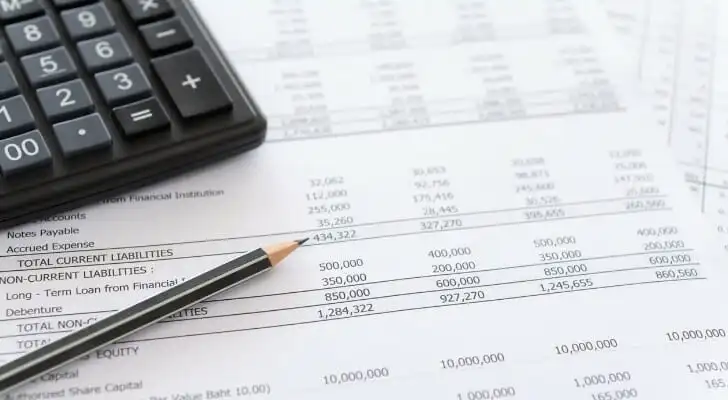 Treasury stock refers to shares that a company has issued and subsequently repurchased from shareholders. These shares are held by the company itself rather than being available in the public market. Companies of all sizes repurchase outstanding shares of their stock for a variety of reasons. It can help boost share prices or save some shares as incentives for a company’s employees. Here’s how they affect investment and a company’s balance sheet. For help considering whether it’s a good investment for your portfolio, consider talking to a financial advisor.
Treasury stock refers to shares that a company has issued and subsequently repurchased from shareholders. These shares are held by the company itself rather than being available in the public market. Companies of all sizes repurchase outstanding shares of their stock for a variety of reasons. It can help boost share prices or save some shares as incentives for a company’s employees. Here’s how they affect investment and a company’s balance sheet. For help considering whether it’s a good investment for your portfolio, consider talking to a financial advisor.
Treasury Stock Explained
Companies offer or issue stock to the public to raise capital. However, sometimes they want to limit the amount of outstanding stock that circulates the market. Treasury stock is a portion of a company’s outstanding shares of stock that the company buys back to decrease the total amount of outstanding stock on the open market. These shares of stocks can also be known as reacquired shares.
Companies may buy back shares to reduce the number of outstanding shares, potentially increasing the stock’s value or improving financial ratios like earnings per share (EPS). Other reasons might include consolidating ownership, preventing a hostile takeover, or distributing excess cash.
Typically, treasury stock doesn’t have much value. The company can either decide to sell the shares in the future or can completely retire the shares and forever take them out of market circulation. They may do this to help raise the share price or limit outside ownership.
How Companies Buy Back Outstanding Shares
As stated above, there are different ways companies can go about buying back their shares. One of the first ways they may go about it is by using a tender offer. With a tender offer, the company will offer to repurchase shares to shareholders at a specific price. The price companies offer tends to be higher than the actual value of a stock, which may entice shareholders to sell. Also, the company will disclose the length of time the offer is valid, and the shareholders can sell their shares at this price until the offer expires.
Another option is to complete a direct repurchase on the open market. When a company announces they are reacquiring its shares, the share price may increase. The company will then buy shares as they would on the open market.
Lastly, the company can engage in a Dutch auction, which is when a company specifies the number of shares they wish to reacquire. Then shareholders can offer their shares at the desired price they wish to receive. The company will purchase the number of shares they want at the lowest price possible. They can do this by purchasing from shareholders who have offered their shares at the lowest price available.
Reasons Companies Buy Back Outstanding Shares
 There are several reasons why a company may want to buy its outstanding shares. The most common explanation for buying shares is to raise shareholder value. With fewer shares in circulation, the higher the value the shares in circulation will have.
There are several reasons why a company may want to buy its outstanding shares. The most common explanation for buying shares is to raise shareholder value. With fewer shares in circulation, the higher the value the shares in circulation will have.
Because a buyback can increase the share price, it’s often used as an alternative to reward investors instead of rewarding them with dividend payments. In the past, this also offered a tax benefit to investors since dividends were taxed at a higher ordinary income level in the U.S. However, now dividends and capital gains are taxed at the same rate, which eliminates this tax advantage for investors.
Another reason companies may buy back their outstanding shares is to consolidate ownership. For instance, if the company is in search of skilled executives, it may want to offer stock options to attract better candidates. By reacquiring their shares, they may be able to make better contracts in the future.
Additionally, buying back shares can be a defensive strategy if the company is a target for a takeover. It becomes more challenging to hold a majority ownership position with fewer shareholders. If this is the company’s objective, they may decide to hold the shares or sell them later in hopes of turning a profit.
Treasury Stock Downsides
Buying treasury stock can backfire if the company’s timing isn’t right. One example is if a company engages in a buyback when stock prices are at an all-time high. Therefore, it would require a lot of capital to purchase the outstanding shares. Investors should also be wary of buybacks depending on the motivation behind them. For instance, if a company is buying back stock intending to increase prices to attract more investors, this might be a sign that the company is anxious to raise capital.
Also, if the company is implementing a buyback to improve the earnings-per-share ratio (EPS), it doesn’t necessarily mean investors will receive any long-term benefits. This announcement may also mean that the company’s profits are dwindling. Or, this could mean operational costs are too high. This could harm the financial security of the company.
So, should you worry if a company you own stock in announces they are buying shares and converting them to treasury stock? Not necessarily. It’s helpful to understand the company’s motives and evaluate the bigger picture regarding the financial strength of the company.
Treasury Stocks and Balance Sheets
Treasury stock is one of the types of equity accounts that companies record on their balance sheet. Transactions involving treasury stocks can impact two accounts on a shareholder’s equity section on the balance sheet. The first account is the one that represents the money the company received when the shares were sold to the public.
The other account represents the money the company spent to buy back its shares, which is the treasury section. Therefore, a $10 balance on the treasury account would offset $10 of common stock. This would then reduce stockholder equity by $10.
Some companies may also split their common stock account into two accounts: common stock and additional paid-in capital. The common stock account represents the par value or face value of the stock. While the paid-in capital represents the funds received for the stock above par value.
For example, if a company sold stock with a 10-cent par value for $15, then the common stock would increase by 5 cents. The additional paid-in capital would increase to $14.95. If the company resells its treasury stocks for more than what was originally paid, the excess would go into paid-in capital. However, if it sells for less, the difference comes from the additional paid-in capital.
Bottom Line
 Treasury stock is shares of stocks that a publicly traded company decides to buy back from shareholders. There are several reasons a company may do this. Some reasons can include reducing cash outflows and countering a potential undervaluing of shares are potential reasons. When a company buys back its stock, it can mean many different things to investors. Make sure to examine the situation carefully. You may want to consider consulting with your financial advisor if a company you own stock in does buy its share back.
Treasury stock is shares of stocks that a publicly traded company decides to buy back from shareholders. There are several reasons a company may do this. Some reasons can include reducing cash outflows and countering a potential undervaluing of shares are potential reasons. When a company buys back its stock, it can mean many different things to investors. Make sure to examine the situation carefully. You may want to consider consulting with your financial advisor if a company you own stock in does buy its share back.
Investment Tips
- Working with a financial advisor can help you navigate events that can impact your portfolio, such as a stock buyback. Finding a financial advisor doesn’t have to be hard. SmartAsset’s free tool matches you with up to three vetted financial advisors who serve your area, and you can have a free introductory call with your advisor matches to decide which one you feel is right for you. If you’re ready to find an advisor who can help you achieve your financial goalss, get started now.
- If you’re planning to sell shares of stock after a buyback, take time to estimate your capital gains tax. A capital gains tax calculator can give you an idea of how much you may owe in taxes on your investment earnings.
Photo credit: ©iStock.com/utah778, ©iStock.com/SARINYAPINNGAM, ©iStock.com/pixelfit